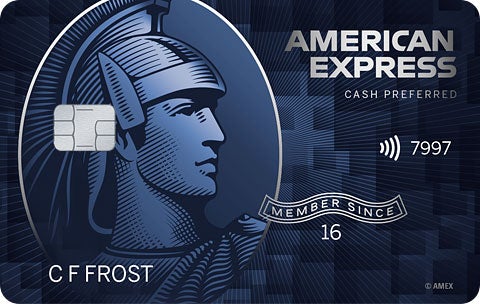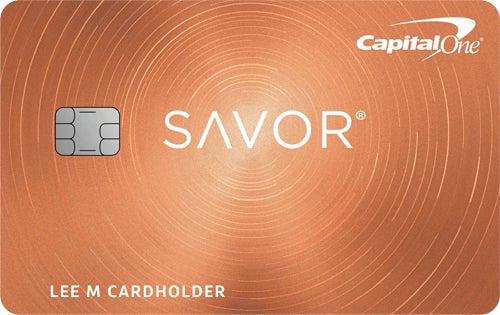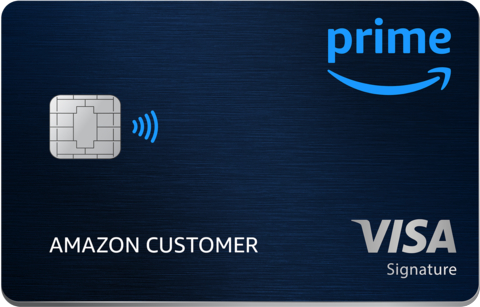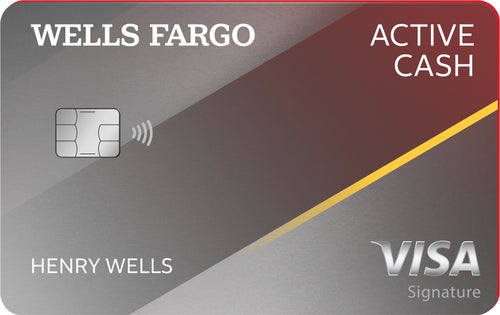'ZDNET Recommends': What exactly does it mean?
ZDNET's recommendations are based on many hours of testing, research, and comparison shopping. We gather data from the best available sources, including vendor and retailer listings as well as other relevant and independent reviews sites. And we pore over customer reviews to find out what matters to real people who already own and use the products and services we’re assessing.
When you click through from our site to a retailer and buy a product or service, we may earn affiliate commissions. This helps support our work, but does not affect what we cover or how, and it does not affect the price you pay. Neither ZDNET nor the author are compensated for these independent reviews. Indeed, we follow strict guidelines that ensure our editorial content is never influenced by advertisers.
ZDNET's editorial team writes on behalf of you, our reader. Our goal is to deliver the most accurate information and the most knowledgeable advice possible in order to help you make smarter buying decisions on tech gear and a wide array of products and services. Our editors thoroughly review and fact-check every article to ensure that our content meets the highest standards. If we have made an error or published misleading information, we will correct or clarify the article. If you see inaccuracies in our content, please report the mistake via this form.
The 5 best credit cards for groceries: Save hundreds of dollars






The Blue Cash Preferred Card has the highest rewards rate on grocery store purchases on our list. It also offers great rewards on gas purchases, which helps with today's higher gasoline prices.
But any rewards card can help you save money on groceries and other spending. The question is: Will a 1% rewards rate, which many credit cards offer, really help much? If you spend $500 on groceries, that's $5 back. If you're paying an annual fee, you may not break even.
These top credit cards below all offer substantially more than 1% on grocery purchases; in fact, the highest card offers 6% back. Choose wisely, and a grocery rewards card may save you hundreds of dollars a year.
- 6% Cash Back at U.S. supermarkets on up to $6,000 per year in purchases (then 1%)
- 6% Cash Back on select U.S. streaming subscriptions
- 3% Cash Back on transit including taxis/rideshare, parking, tolls, trains, buses and more
- 3% Cash Back at U.S. gas stations
- 1% Cash Back on other purchases
- 6% Cash Back at U.S. supermarkets on up to $6,000 per year in purchases (then 1%)
- 6% Cash Back on select U.S. streaming subscriptions
- 3% Cash Back on transit including taxis/rideshare, parking, tolls, trains, buses and more
- 3% Cash Back at U.S. gas stations
- 1% Cash Back on other purchases
If you're serious about racking up grocery store rewards, check out the Blue Cash Preferred credit card. It has the highest rewards rate of any card we reviewed.
Unlike some other rewards cards, you don't need a top-tier credit score to qualify for this card. You may be able to sign up with a "good" or better credit score.
The rewards don't end with grocery store savings. You'll receive the same level of rewards for select streaming subscription purchases, and lesser rewards rates on gasoline purchases and all other purchases.
Pros
- Highest cash back rewards on grocery purchases
- High cash back rewards on select streaming subscriptions
- Good and better credit scores accepted
Cons
- Annual limit on grocery cash back rewards
- Foreign transaction fees
- Average to high interest rates on balances
- Penalty APRs (higher rates if you miss a payment)

Blue Cash Preferred® Card from American Express
- Earn 5% cash back on Walmart.com purchases, including pickup and delivery
- Earn 2% cash back on purchases in Walmart® stores, Murphy USA and Walmart® fuel stations
- 2% cash back on restaurants and travel purchases
- 1% cash back on all other purchases everywhere else Mastercard® is accepted
- Earn 5% cash back on Walmart.com purchases, including pickup and delivery
- Earn 2% cash back on purchases in Walmart® stores, Murphy USA and Walmart® fuel stations
- 2% cash back on restaurants and travel purchases
- 1% cash back on all other purchases everywhere else Mastercard® is accepted
If you shop for groceries at Walmart, you can't go wrong by getting a no-annual-fee credit card from Walmart. Its rewards rates on groceries and other items are almost as high as the grocery store rewards rate for the Blue Cash Preferred Card, but there is no limit on how much you can spend and receive the high rate. The only catch is that you must order your groceries online after the first year for the very best rewards rate.
If you don't shop for groceries at Walmart, their rewards card may convince you to try them out. Walmart carries name brands at very competitive prices, so you'll save money even before you start collecting rewards.
For even more rewards, use Walmart Pay, Walmart's digital smartphone app, with your Capital One Walmart Rewards Card.
Pros
- Unlimited high cash back rewards on grocery purchases ordered online
- Good rewards for in-store purchases
- No annual fee
- Higher rewards when you use with Walmart Pay, their digital app
- Use your card anywhere Mastercard is accepted
Cons
- Must order online at Walmart.com to receive highest rewards rate
- Lower rewards on purchases made at other grocery stores
- Average to high interest rate (APR) if you carry a balance

Capital One Walmart Rewards Card
- Earn unlimited 4% cash back on dining, entertainment and popular streaming services
- Earn 3% at grocery stores
- Earn 1% on all other purchases
- Earn unlimited 4% cash back on dining, entertainment and popular streaming services
- Earn 3% at grocery stores
- Earn 1% on all other purchases
We like the Capital One Savor Rewards Card for its good rewards rate, plus a cash bonus if you spend a certain amount within the first three months.
You pay an annual fee right away with this card, but it should be well offset by your cash rewards. If you travel abroad, you'll appreciate no foreign transaction fees, and if you're ever late on a payment, your interest rate won't go up as a result (known as a penalty APR).
If you spend regularly on dining, entertainment, and streaming services, you can earn even higher rewards rates in these categories.
Pros
- High cash back rewards on grocery purchases
- Excellent cash back rewards on dining, entertainment, and select streaming subscriptions
- No foreign transaction fees
- Moderate APRs
- Signup bonus after you reach a spending threshold
Cons
- Annual fee starting the first year
- Good rewards rate, but lower than some competitors

Capital One Savor Rewards Card
- Prime Card Bonus: Earn 10% back or more on a rotating selection of items and categories on Amazon.com with an eligible Prime membership
- Earn unlimited 5% back at Amazon.com, Amazon Fresh, Whole Foods Market, and on Chase Travel purchases with an eligible Prime membership
- Earn unlimited 2% back at gas stations, restaurants, and on local transit and commuting (including rideshare)
- Earn unlimited 1% back on all other purchases
- Prime Card Bonus: Earn 10% back or more on a rotating selection of items and categories on Amazon.com with an eligible Prime membership
- Earn unlimited 5% back at Amazon.com, Amazon Fresh, Whole Foods Market, and on Chase Travel purchases with an eligible Prime membership
- Earn unlimited 2% back at gas stations, restaurants, and on local transit and commuting (including rideshare)
- Earn unlimited 1% back on all other purchases
If you shop at Whole Foods and you're an Amazon Prime member, you probably need an Amazon Prime Rewards Visa Signature Card. It's a no-fee card that pays you back handsomely every time you shop at Whole Foods, which is owned by Amazon.
You get the same high rewards rate when you shop at Amazon and lower rates at restaurants and gas stations. Your rewards rates on all other purchases seem low by comparison, but it can still add up.
You do need to pay for an annual Amazon Prime membership for this card
Pros
- High cashback rates at Whole Foods and on Amazon.com
- Good rewards rates at other stores
- No annual fee
Cons
- Lower rewards rates at other grocery stores
- Amazon Prime membership required
- Rewards redeemed on Amazon.com purchases

Amazon Prime Rewards Visa Signature Card
- Earn unlimited 2% cash rewards on purchases
- Earn unlimited 2% cash rewards on purchases
Credit cards with fees tend to have the highest cash rewards rates. What if you don't want to pay a fee or take the chance that your rewards won't be high enough to offset the annual fee?
The Wells Fargo Active Cash Card comes with no annual fee, so your acceptable cash rewards rate is all yours from the first month. It also offers a signup bonus after you meet a minimum threshold on your card.
You must have excellent credit to qualify for this card.
Pros
- Good cash rewards on purchases
- No annual limits on rewards
- No annual fee
- Intro rate on balance transfers
Cons
- Lower rewards rates than some competitors
- Excellent credit score required

Wells Fargo Active Cash® Card
What is the best credit card for groceries?
The Blue Cash Preferred Card from American Express is the best credit card for groceries overall. It's for those of you who are serious about racking up grocery store rewards.
Which credit card is the right one for me?
You should choose a card that best matches the features you're looking for, such as high cashback rates, branding, APR, and more. The cards in this list are a great place to start.
Can I use these grocery rewards cards at other stores and venues?
All our picks for grocery store rewards cards are also good at other stores, restaurants, online services, and anyplace else that accepts major credit cards. Walmart also offers a credit card that you can only use at its stores.
I usually carry a credit card balance. Would these cards be good for me?
High interest rates can cost you far more than you'll receive back in grocery store rewards. If you have significant credit card balances, concentrate on paying them off first, perhaps with a low- or no-interest introductory period credit card. When you're out of credit card debt, a grocery rewards card will make more sense.
What should I be careful of with a rewards card?
If having a rewards card tempts you to overspend, watch out. It wouldn't take much additional spending to cost you more than you're saving with rewards. You're always better off not spending a dollar than getting even several cents back.
How did we choose these cards?
We chose five credit cards with above average rewards rates on groceries. They either have no annual fee, or their rewards rates more than make up for a fee. Cards may have average or higher interest rates (APRs); however, it's assumed everyday purchases such as groceries are paid off every month.
Are there alternative credit cards worth considering?
Below are a couple more credit cards worth checking out:
- The Capital One Quicksilver Cash Rewards Credit Card is a no-fee card with moderate cash reward levels. It has no minimums to redeem your cash, and your rewards never expire. The Capital One Quicksilver card also offers no-interest introductory periods on purchases and balance transfers(with a 3% fee on the amounts transferred in the first 15 months).
- The Costco Anywhere Visa Card by Citi offers good cash back rewards on your Costco purchases, including groceries, plus higher rewards on certain purchases such as gasoline. You must have a current Costco membership for this one, though.